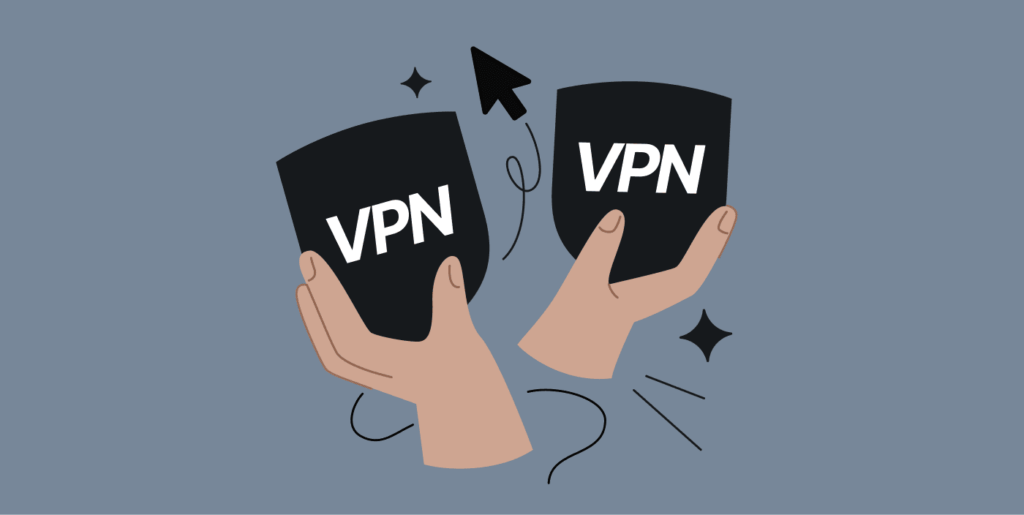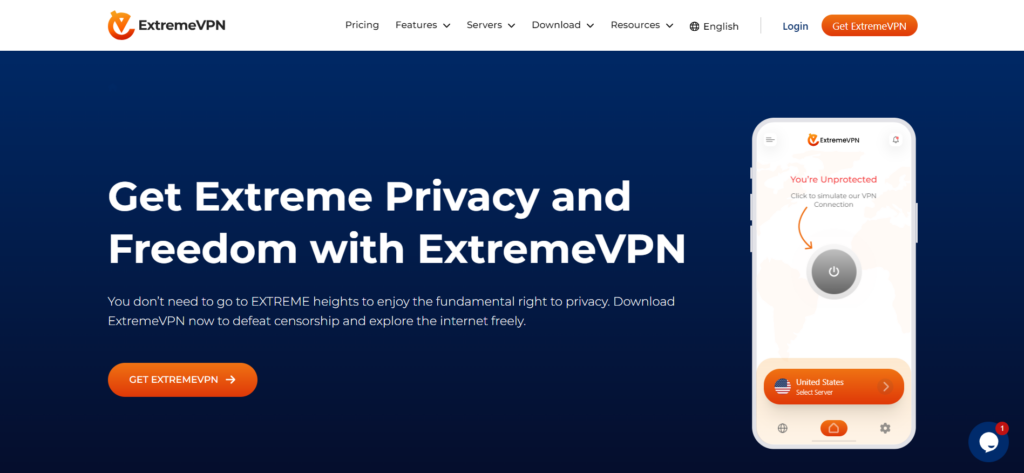Among many other advantages, the internet allows you to keep in contact with peers, pay bills faster, and conduct in-depth studies on challenging subjects from the ease of your home. However, it also has disadvantages. While connectivity problems are one of those drawbacks, they are simply an annoyance we occasionally have to cope with. Conversely, cyberattacks may be disastrous.

These days, Denial of Service (DoS) assaults and their more vicious type, Distributed Denial of Service (DDoS), are among the most common cyberattacks. Now the question arises: Can a VPN protect you from DDoS attacks? Indeed, it can.
In this article, we’ll use an educational infographic to demonstrate the essential workings of a DDoS-protected VPN, showing how it successfully fends off DDoS attacks and maintains continuous online security.
Distributed Denial-of-Service Attacks: An Overview
As their name implies, denial-of-service attacks are assaults designed to interfere with regular network operations by overloading an intended resource with traffic. DDoS overloads the victim’s server or website with network traffic from several sources. These assaults have the potential to seriously harm individuals, businesses, and organizations, leading to monetary losses, harm to one’s reputation, and decreased productivity.
A DDoS botnet is a set of compromised devices that cybercriminals create by infecting several devices with software. Computers, servers, Internet of Things devices, and even cell phones might be among these gadgets. Attackers direct compromised devices and botnets to send malicious traffic to a designated server or network.
This deluge of traffic may include UDP packets, HTTP requests, ICMP packets, and other kinds of network traffic. The target network or server breaks down or fails due to the sheer amount of incoming traffic. It stops authorized users from using the resources or services the server or website offers. DDoS assaults can result in various issues, such as the momentary interruption of programs, websites, or even whole companies.
DDoS assaults can have a variety of motivations, such as stealing, extortion, initiating more attacks, harming someone’s reputation, or wreaking havoc. With this cyberattack, hackers and activists bring down the victim’s website or server in exchange for money. DDoS assaults are becoming increasingly an issue for individuals and internet organizations.
What are the Types of DDoS Attacks?
DoS and DDoS assaults may be broadly classified into three categories:
1. Volume-based Attacks
A Volume-based DDoS attack overloads a server or network by sending many data packets simultaneously. The goal is to use up all of the allocated bandwidth. It comprises various spoof-packet floods, UDP floods, and ICMP floods. The attack’s scale is expressed in bps (bits per second) to flood the targeted site’s bandwidth.
Volume-based assaults often target business customers or vital SP services. A particular network, server, or webpage may be the target. These attacks may entail flooding the target with so many data packets that it cannot process the incoming traffic.
A Volume-based attack’s main goal is to use up all the network bandwidth available, making it harder for legal data. It may cause significant service outages and failures for customers attempting to connect to the targeted server or network. These assaults deplete the target’s resources, including processing power and bandwidth, making it harder for authorized users to use the target’s resources.
2. Protocol Attacks
A Protocol Attack is a cyberattack that uses server resources to produce a denial of service by taking advantage of flaws in network protocols. TCP, UDP, ICMP, and IP are among the network protocol layers that are the target of these assaults. It includes Ping of Death (PoD), Smurf DDoS, fragmented packet assaults, SYN floods, and more.
Attacks of this kind are measured in PPS (packets per second) and use up real server resources and intermediary communication devices like firewalls and load balancers. The purpose of protocol assaults is to prevent legitimate users from accessing the resources by using up the target’s bandwidth and processing capacity. A major effect of this attack might be the closure of websites.
3. Application Layer Attacks
By focusing on an application’s problems, an Application Layer DDoS assault, also known as a 7 DDoS attack, impedes material delivery through the app. The application layer is the particular target of this kind of cyberattack. Its primary objective is to interfere with the transmission of material. It includes GET/POST floods, low-speed assaults, and attacks aimed at Windows, Apache, or OpenBSD vulnerabilities.
The goal of these assaults, measured in RPS (Requests Per Second), is to bring down the web server through a series of seemingly innocent and lawful requests. These attacks try to seize control of app protocols or interrupt services by targeting application layer protocols such as DNS and HTTP. Application layer assaults are complex and risky techniques mostly employed against networks and programs interacting with users.
They can shut down websites or networks without being noticed by conventional defense measures. Application layer attacks are a popular technique attackers use to interfere with services since they target certain protocols or services.
How VPN Protects You from DDoS Attacks?

Because a VPN hides your geographical location and encrypts your communication, it shields you against DDoS assaults to some extent. It obscures your VPN IP address so that hackers have a harder time finding your network. A virtual private network (VPN) hides your online activities from your internet service provider (ISP) by forming a VPN tunnel between your device and the network and encrypting your online traffic.
However, VPNs are not infallible defenses against DDoS assaults. The VPN may fail several times, leaving the user open to assault if the VPN provider has not integrated DDoS attack defense well. Hence, only a high-end VPN service like ExtremeVPN can help you stay protected. You can stop DDoS assaults using a VPN, but once they start, you can do nothing to prevent them.
Is DDoSing Illegal?

Many nations consider DDoSing to be unlawful. For instance, DDoS attacks are punishable by law and may result in jail time in the United States. DDoSing may result in arrest in the majority of European nations, and in the UK, starting an attack can carry a term of ten years or more in jail.
Can You Trace DDoS Attacks?

Because DDoS assaults are typically dispersed over hundreds or even thousands of different machines, they are challenging to track down. Moreover, persons who start these kinds of attacks typically want to disappear.
DDoS assaults can be detected when they occur by analyzing the traffic using certain cybersecurity tools. But typically, it’s too late to eliminate them. You can examine the information and adjust cybersecurity going forward.
Tips to Protect Yourself Against DDoS Attack
The following actions can be taken to stop DDoS attacks:
- Use a premium VPN service. ExtremeVPN is your best bet as it offers the best security and privacy. ExtremeVPN’s vast server network ensures you can connect to over 6500+ servers in 78+ countries. It makes monitoring your web traffic difficult for hackers and other third parties.
- Monitor the flow of your site using traffic monitoring software, allowing you to inspect for changes in behavior.
- As a company, you may collaborate with your ISP to formulate a DDoS defense plan- get a clean network. ISPs can identify fraudulent packets before reaching your device for reduced risk.
- Conduct routine security audits. Regularly assess the security of your networks, and think about deploying specialized DDoS attacks to put the systems under strain and identify any flaws.
- Make use of outside DDoS protection resources. You may use several external services to reduce your risk of DDoS attacks. Just be careful to select trustworthy and safe ones. But remember that none of those can provide your complete safety.
How Do I Know if I’ve Been DDoSed?
Here are a few indicators that you may have been DDoSed:
- Inability to access website management
- Absence of internet connectivity
- More time consumption in loading websites
- Unexpected errors, faults, and timeouts
- Sluggish reaction
What to Do if You’re DDoSed?
There are actions you can do if you were DDoSed and didn’t get your Virtual Private Network set up in time:
- Put your website in maintenance mode if you are in charge of it to avoid losing any data.
- Inform your ISP that you are being attacked over the phone.
- Notify your organization’s management staff about the problem.
- Inform other companies in charge of perimeter security management or service delivery over the phone that you are being attacked.
- Modify your IP address to update your location.
- After taking those steps, if the situation is still out of control, take more drastic measures. For example, you can file a complaint with the FBI’s Internet Crime Complaint Center5 and contact police authorities and people whose data may have been lost.
- Gather as much data as you can, including the following:
- When the event began.
- Event duration Traffic statistics that, if available, display traffic throughput.
- Logs from servers.
- Modifications that might occur during or shortly after the DDoS attack.
How Do You Choose a VPN to Mitigate DDoS Attacks?

It might be difficult to choose the best VPN to reduce DDoS assaults, but there are a few things to take into account:
- Server network: To give users a wide range of connection possibilities, a VPN has to have many servers spread across different areas. Distributing traffic among several servers aids in the prevention of DDoS assaults. ExtremeVPN provides its customers with a vast server network of over 6,500 servers in 78 countries worldwide.
- DDoS protection: A VPN provider that provides DDoS protection is what you should search for. Strong security mechanisms must be available for real-time DDoS attack detection and mitigation. ExtremeVPN is a DDoS-protected VPN that ensures a safe and secure online experience, protecting your online identity from potential attacks and threats.
- Logging policy: The VPN must adhere to a rigorous no-logging policy to protect user security and privacy. What a hacker cannot see, he cannot attack. We at ExtremeVPN implement a strict no-logs policy that ensures that it doesn’t store any of its users’ data.
- Encryption & speed: The VPN should have strong encryption to protect user information and IP addresses from leaks. Another necessary VPN setting is to ensure the connection speed with which a user can stream and browse without interruptions. ExtremeVPN adopts AES-256 military-grade encryption and protocols such as WireGuard, OpenVPN, and IPSec/IKEv2 to ensure that user privacy is not compromised at all costs.
Conclusion
VPNs may provide DDoS attacks if used correctly, but they are not infallible. However, a VPN may do little to protect you if the cyber criminals already have your IP address or if reputed VPN providers develop poor DDoS defense strategies.
VPNs encrypt your data and hide your IP address to do this. But keep in mind that they do have certain restrictions. To effectively defend against DDoS assaults, you need further security precautions and a reliable DDoS-protected VPN like ExtremeVPN. Maintain the security of your online presence by making constant security improvements.